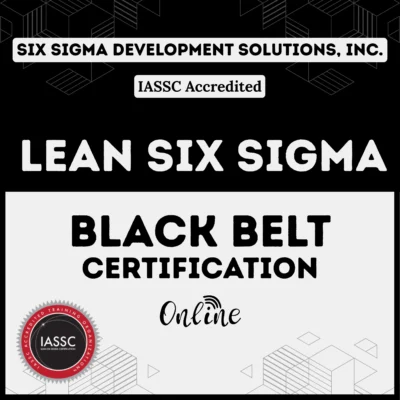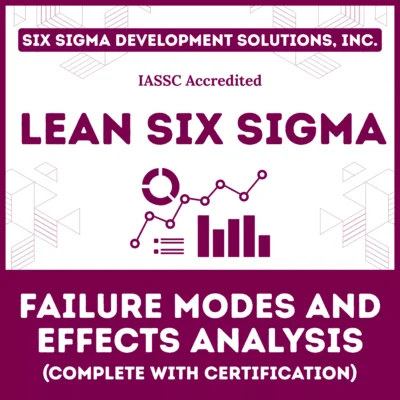Green Supply Chain Management (GSCM) refers to the process of integrating environmentally friendly practices within the entire supply chain, from the production of goods to their distribution and disposal. It involves reducing environmental impact and adopting sustainable methods in the design, manufacturing, and logistics of products.
As environmental concerns grow globally, businesses increasingly prioritise green practices to reduce their carbon footprint, lower waste, and use resources more efficiently.
The development of GSCM has become a critical aspect of modern industries as they try to balance profitability with environmental responsibility. This evolution is driven by increasing public awareness of environmental issues, such as global warming, pollution, and resource depletion, and by the implementation of stricter environmental regulations worldwide.
GSCM involves both forward and reverse logistics, focusing on reducing waste and improving the reuse and recycling of materials throughout a product’s lifecycle.
Table of contents
What is Green Supply Chain Management?
Green Supply Chain Management (GSCM) refers to integrating environmental concerns into traditional supply chain processes. It includes product design, material sourcing, manufacturing, transportation, and end-of-life management. The goal is to create a sustainable supply chain that minimizes environmental impact while maintaining efficiency and profitability.
Definition of GSCM
According to Handfield et al., GSCM involves applying environmental management principles throughout the entire supply chain. This includes activities such as procurement, design, production, assembly, logistics, and distribution.
Similarly, Lin et al. (2001) connect GSCM to Environmentally Conscious Manufacturing (ECM), which focuses on reducing waste, enhancing material efficiency, and improving operational safety. In essence, GSCM integrates environmental considerations into every aspect of the supply chain.
Need for Green Supply Chain Management
Over the years, businesses have seen the need to balance sustainability with business goals. Environmental issues like pollution, resource depletion, and climate change have prompted businesses to take responsibility for their environmental footprint. A green supply chain helps reduce negative environmental impacts while still achieving business success.
Key Elements of GSCM
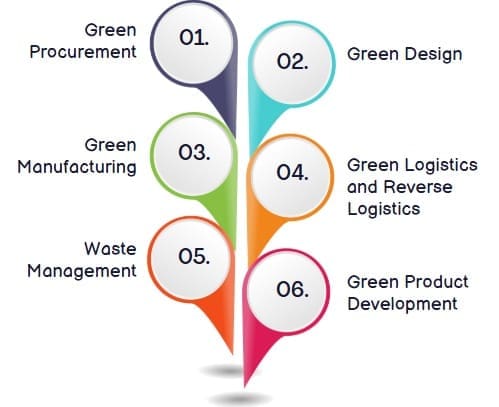
- Green Procurement
Green procurement involves purchasing materials and services that have minimal environmental impact. Companies adopt eco-friendly sourcing practices like using recycled materials or buying from suppliers who follow sustainable practices. - Green Design
Green design focuses on creating products that minimize environmental harm during production and throughout their lifecycle. This includes using eco-friendly materials and designing products that are easier to recycle or dispose of sustainably. - Green Manufacturing
Green manufacturing aims to reduce waste and energy consumption. It involves using environmentally friendly processes, reducing pollution, and creating products with a longer lifespan. Efficient manufacturing systems can also lead to lower costs and improved product quality. - Green Logistics and Reverse Logistics
Green logistics reduces the environmental impact of transporting goods. This includes optimizing routes, using fuel-efficient vehicles, and minimizing packaging. Reverse logistics refers to managing the return of products for recycling or disposal, promoting sustainability by recovering value from used products. - Waste Management
Waste management involves minimizing waste produced during manufacturing. Companies focus on reducing, reusing, and recycling materials. This not only reduces environmental harm but also lowers disposal costs. - Green Product Development
Green product development focuses on creating environmentally friendly products that are both functional and sustainable. It includes using renewable resources, designing for easy disassembly, and reducing waste in the production process.
Evolution of Green Supply Chain Management
The concept of Green Supply Chain Management emerged as a response to the increasing environmental challenges facing industries worldwide. Historically, traditional supply chain management (SCM) focused on cost efficiency, logistics, and the movement of goods.
However, as environmental problems grew more pressing, it became clear that supply chains needed to adopt more sustainable practices. The shift from traditional SCM to GSCM involves a more holistic approach that considers the environmental impact of every stage of the supply chain.
In the early stages, businesses started recognizing the need to consider environmental factors such as energy consumption, waste management, and the reduction of harmful emissions.
Over time, industries began integrating green technologies into their production and distribution systems. The rise of green regulations and consumer demand for eco-friendly products further fueled this transformation.
One of the earliest milestones in the development of GSCM was the life-cycle analysis (LCA) conducted by Coca-Cola in 1969 to assess the environmental impact of its product packaging. This analysis laid the foundation for understanding how products affect the environment at various stages of their lifecycle, from production to disposal.
As awareness of environmental issues grew, businesses began incorporating these insights into their supply chain practices, ultimately leading to the establishment of GSCM.
Key Principles of GSCM

GSCM is based on three major pillars: dematerialization, detoxification, and decarbonization. These principles focus on minimizing the use of natural resources, reducing harmful emissions, and creating environmentally friendly products. Let’s break down these principles further:
- Dematerialization: This refers to reducing the materials used in production. By using fewer resources, companies can minimize waste and lower the overall environmental impact of their supply chain.
- Detoxification: Detoxification involves eliminating hazardous substances from production processes and products. By reducing the use of harmful chemicals, industries can prevent pollution and reduce the risk of environmental damage.
- Decarbonization: Decarbonization focuses on reducing carbon emissions in supply chains. This involves improving energy efficiency, shifting to renewable energy sources, and optimizing transportation to lower the carbon footprint.
Green Supply Chain Management Strategies
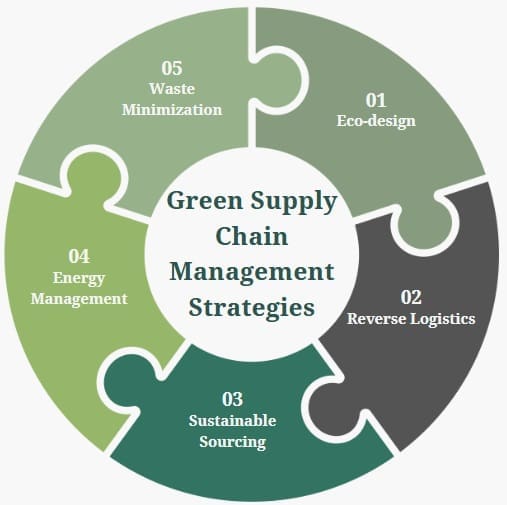
Several strategies are adopted by businesses to implement green practices within their supply chains. These include:
- Eco-design: Designing products with minimal environmental impact by considering factors like energy efficiency, material usage, and the ability to recycle or reuse products at the end of their lifecycle.
- Reverse Logistics: Managing the flow of products from the consumer back to the manufacturer for recycling, remanufacturing, or disposal in an environmentally responsible way.
- Sustainable Sourcing: Choosing suppliers who adhere to environmental and sustainability standards. This could include selecting materials that are renewable, biodegradable, or less resource-intensive.
- Energy Management: Reducing energy consumption across the supply chain by implementing energy-saving technologies, optimizing transportation routes, and shifting to renewable energy sources.
- Waste Minimization: Reducing waste by improving production efficiency, recycling materials, and minimizing packaging.
Life Cycle Analysis (LCA) and Its Role in GSCM
Life cycle analysis (LCA) is a critical tool in GSCM. It involves evaluating the environmental impact of a product at every stage of its life, from raw material extraction to manufacturing, transportation, usage, and disposal.
By conducting an LCA, businesses can identify areas where they can reduce their environmental footprint, such as using fewer resources, minimizing emissions, or improving the recyclability of their products.
LCA helps businesses make informed decisions about product design and production processes, ensuring that they align with environmental goals. It also helps companies comply with environmental regulations and meet consumer expectations for eco-friendly products.
Green Procurement and Supplier Collaboration
One of the core aspects of GSCM is green procurement. This involves selecting suppliers based on their environmental performance and sustainability practices. Suppliers are required to meet specific environmental standards, such as using eco-friendly materials, reducing emissions, or adhering to waste management protocols.
In some industries, such as automotive and electronics, companies collaborate with suppliers to ensure that the materials used in their products meet international environmental standards. For example, automobile manufacturers work with suppliers to meet end-of-life vehicle (ELV) regulations, which govern the disposal and recycling of vehicle parts.
Companies like Sony and Dell have set standards for their suppliers to ensure that hazardous materials are not used in their products. These green procurement practices help companies reduce the environmental impact of their supply chains while also maintaining product quality.
Role of Information Technology in GSCM
Information technology (IT) plays a significant role in facilitating GSCM. With the help of advanced IT systems, businesses can track the environmental impact of their supply chains, collaborate with suppliers, and ensure compliance with green standards. Technologies such as cloud computing, big data analytics, and Internet of Things (IoT) sensors enable companies to monitor and manage their supply chains more efficiently.
For example, IT systems can be used to track carbon emissions, energy consumption, and waste generation at various stages of the supply chain. By collecting and analyzing data, companies can identify areas for improvement and take action to reduce their environmental footprint.
Motivations for Implementing GSCM
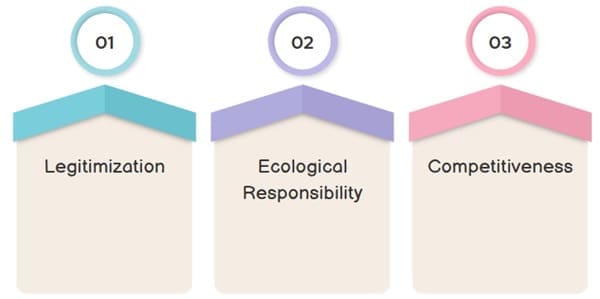
Legitimization
Some companies adopt GSCM practices to comply with regulations or to avoid penalties. Their motivation is mainly to meet environmental standards and avoid risks associated with non-compliance.
Competitiveness
Other companies adopt GSCM to gain a competitive advantage. By improving sustainability, these companies can reduce costs, enhance brand image, and attract more customers, ultimately improving financial performance.
Ecological Responsibility
Some companies are driven by a genuine commitment to the environment. These businesses focus on reducing their carbon footprint and promoting sustainability as part of their core values.
Benefits of Green Supply Chain Management
Implementing GSCM offers several benefits to businesses, including:
Sustainability of Resources
GSCM ensures that natural resources are used efficiently and that waste is minimized. By using eco-friendly materials and sustainable practices, companies can help preserve resources for future generations.
Cost Reduction and Increased Efficiency
GSCM can lead to significant cost savings. By minimizing waste, optimizing resource use, and improving energy efficiency, companies can reduce production costs. Additionally, adopting green practices can help companies avoid fines and penalties related to environmental regulations.
Product Differentiation and Competitive Advantage
Businesses that adopt green supply chain practices can distinguish themselves in the market. Environmentally conscious consumers often prefer products that are sustainably produced, giving companies an edge over competitors.
Compliance with Regulations and Risk Reduction
GSCM helps companies comply with environmental laws and regulations. By integrating green practices, companies reduce the risk of facing legal issues, fines, or negative publicity.
Improved Product Quality
Companies that focus on sustainability often produce higher-quality products. This can enhance brand reputation and attract customers who value eco-friendly products.
Other Advantages of GSCM
- Improved Financial Performance: GSCM can positively impact a company’s financial performance by reducing costs and enhancing efficiency.
- Effective Supplier Management: Companies can foster strong relationships with suppliers to promote sustainability across the entire supply chain.
- Knowledge Sharing: GSCM encourages the sharing of advanced technologies and practices among supply chain partners, improving overall performance.
- Transparency: Green practices enhance transparency, helping customers understand the environmental impact of products.
- Risk Sharing: By collaborating with supply chain partners, companies can share large investments and risks, reducing financial exposure.
Challenges in Implementing GSCM
While GSCM offers numerous benefits, its implementation also comes with challenges. Some of these include:
- High Initial Costs: Implementing green technologies and processes can be expensive upfront, which may deter some companies from adopting GSCM.
- Complexity: GSCM involves coordinating multiple stakeholders across the supply chain, which can be complex and time-consuming.
- Supply Chain Transparency: To effectively manage a green supply chain, businesses must have access to detailed information about their suppliers’ practices, which may not always be readily available.
- Resistance to Change: Some companies may resist adopting GSCM due to concerns about the cost, disruption to existing processes, or a lack of knowledge about green practices.
Final Words
Green Supply Chain Management is a crucial component of sustainable business practices in today’s world. It integrates environmental responsibility into every aspect of the supply chain, from sourcing raw materials to product disposal.
As environmental concerns continue to grow, businesses that prioritize GSCM will not only reduce their environmental impact but also gain a competitive advantage in the marketplace. By adopting strategies such as eco-design, reverse logistics, and green procurement, companies can build a more sustainable supply chain that meets both regulatory requirements and consumer demand for eco-friendly products.
However, the successful implementation of GSCM requires overcoming challenges such as high initial costs, complexity, and resistance to change. Nonetheless, the long-term benefits of GSCM make it a vital practice for industries aiming to thrive in a sustainable future.





